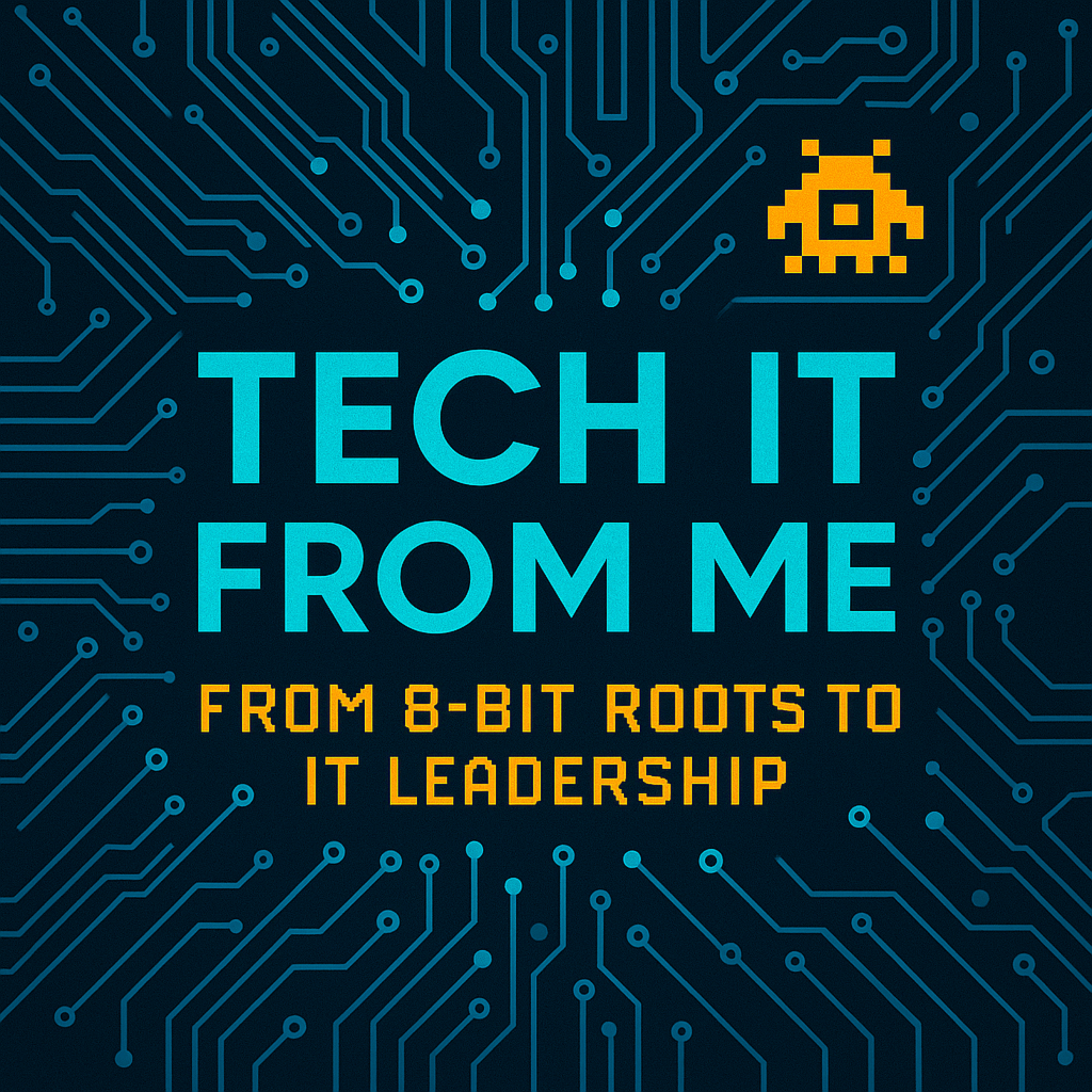
Table of Contents
🚀 Intro: What 30 Years in IT Taught Me
I started my IT career in the mid-1990s, back when “tech support” meant crawling under desks, configuring IRQs, and praying that Windows 95 wouldn’t crash during a presentation. Fast forward to today, and we’re dealing with cloud orchestration, cybersecurity frameworks, and AI-powered everything.
As I look back on nearly three decades of change, I ask a simple question:
Where is IT going next?
🧠 Breaking Into IT in the 90s
I got my start at New Horizons Computer Learning Centres in Calgary, thanks to a gentleman named Doug Thompson. Doug had the foresight to leave oil and gas and dive into tech — and he, along with a lady named Roma, gave me my first shot. I started as a computer instructor, which taught me how to explain complex things simply — a skill that’s served me every day since.
From there, I joined Shopplex, an early online shopping mall that eventually became Teilhard Technologies — a B2B dot-com company that grew fast… and failed faster. The dot-com crash was brutal, but it taught me the real difference between hype and value.
📈 The 2000s: From Tech Support to Strategic Partner
The 2000s were the golden era of in-house IT maturity. We implemented Active Directory, stood up Exchange servers, and learned how to run IT like a service.
Frameworks like ITIL brought structure, while the rise of the PMO brought us into strategic business discussions.
IT wasn’t just about “fixing things” anymore.
We were optimizing workflows, leading digital transformations, and becoming trusted partners in growth.
☁️ 2010s: Cloud, Mobility, and Outsourcing
Then came the cloud — and everything changed.
Suddenly, we weren’t racking servers… we were managing vendors.
Instead of configuring Exchange, we were deploying Office 365.
Instead of controlling every switch and firewall, we were negotiating SLAs with managed service providers.
Outsourcing ramped up. Help desks went offshore. Infrastructure teams got lean.
And while some organizations gained efficiency, others lost depth, context, and innovation capability.
🤖 The AI Era: Why I Call It Augmented Intelligence
I have a personal preference: I don’t call it Artificial Intelligence.
I call it Augmented Intelligence — because that’s what it should be.
AI shouldn’t replace us — it should amplify us.
It should free us from repetitive tasks, improve our insights, and help us move faster.
But too many companies don’t know how to implement it well. They’re buying the tools, but not building the culture.
Smart IT teams know: AI isn’t a magic bullet. It’s a powerful toolkit — and it needs leadership.
⚠️ The Risk of Deprioritizing IT
Today, I’m seeing a troubling trend: IT is often treated like a cost center — not a value driver.
It’s being outsourced, minimized, and deprioritized in the name of efficiency.
But when you weaken your IT function, you don’t just save money — you lose agility, security, and internal innovation.
IT is your nervous system. If you neglect it, the whole organization suffers.
🔮 So What’s Next?
I believe the AI future is hybrid:
- Smaller, high-impact internal IT teams
- Strategic use of automation and AI
- Vendor partnerships managed by people who understand both tech and business
- And an IT function that’s not buried in service tickets, but sitting at the leadership table
The best companies won’t eliminate IT — they’ll elevate it.
🎧 Want the Full Story?
You can listen to the full episode of Tech It From Me – Episode 7 here:
👉 Listen to the Episode »
🟢 Also available on Spotify, Apple Podcasts, and other platforms.
📬 Join the Conversation
Have you lived through some of these changes in IT?
Are you navigating AI, automation, or a cloud migration right now?
I’d love to hear from you.
📧 Email me at [email protected]
💬 Or leave a comment wherever you listen to podcasts.
